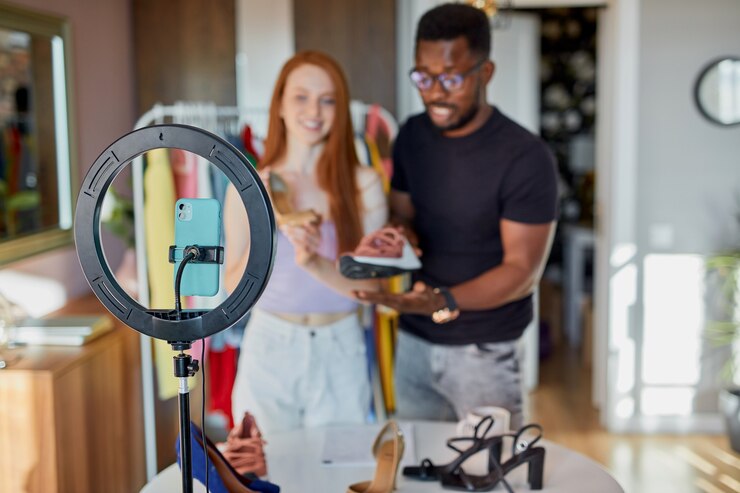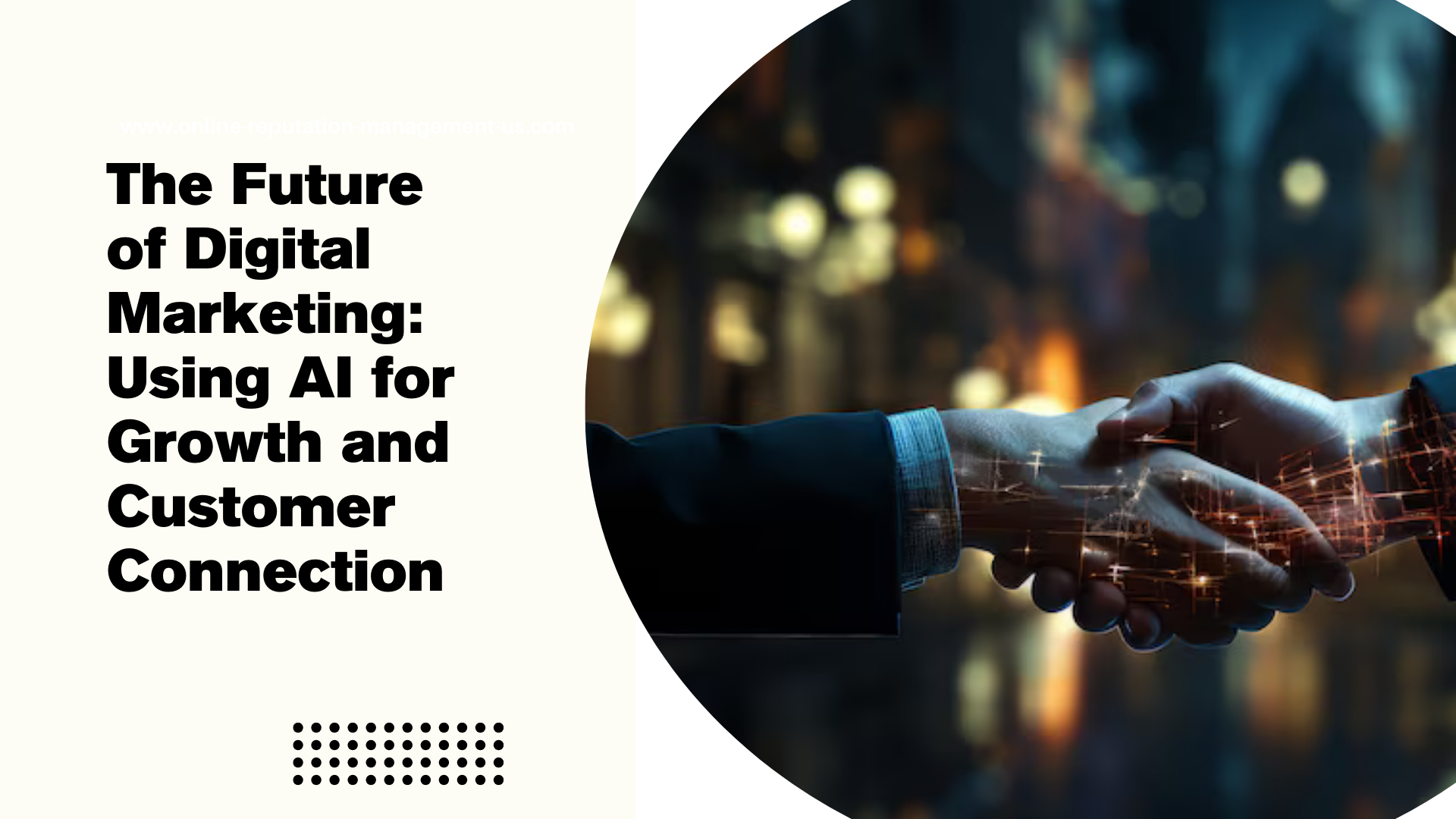How to Get Influencers to Promote Your Brand? Know with Ladnek Media
If you want to grow your brand, working with influencers can help. Influencers have strong, trusted relationships with their followers, so their opinions matter. People pay attention when they talk about a brand and often take action. But how can you get influencers to talk about your brand? This informative content journey will discuss easy steps to start working with influencers through effective digital media outreach. Let’s read more about it in detail.

# 1. Know Your Brand Goals
Before you contact influencers, be clear about what you want to achieve. Do you want more people to know about your brand, increase sales, or reach a new group of people? Knowing your goals will help you pick the right type of influencer.
Brand Awareness: Work with influencers who have a large number of followers.
Increasing Sales: Look for influencers with high engagement. Their followers are more likely to trust their advice.
Reaching a New Audience: Choose influencers focusing on topics matching your brand’s values.
# 2. Find the Right Influencers for Your Brand
Only some influencers will work well for your brand. To choose the right ones, keep these points in mind:
Audience Match: Ensure the influencer’s followers are similar to your target customers.
Engagement Rate: See how often people like, share, or comment on their posts. High engagement shows they connect well with their audience.
Content Style: Check if their style matches your brand’s tone and image. An influencer with a similar look will feel like a natural fit for your brand.
You can use tools like Instagram Insights or platforms like Ladnek Media to check influencer stats or search for influencers on social media.
# 3. Interact with Influencers First
Before contacting an influencer, please spend some time interacting with their content. Follow them, like their posts, leave thoughtful comments, and share their content. This shows that you’re truly interested in what they do, not just wanting quick help with promotion. By building a connection first, the influencer may recognize your brand when you reach out, making them more likely to consider a partnership for brand growth.
# 4. Send a Personal Message
When you reach out, make it personal. Avoid sending a message that feels generic or could be sent to anyone. Mention specific things you like about their content and explain why you think they’d be a great fit for your brand. For example:
“Hi [Influencer’s Name], I’ve been following your work for a while, and I like how you [mention something unique they do, like their style or storytelling]. Your approach would connect well with our brand, Ladnek Media, and audience.”
Explain what you’re looking for in the partnership, like a product review, an Instagram story, or a post, and share what you’re willing to offer in return, like free products, discounts, or payment.
# 5. Provide Fair Compensation
Some influencers may promote products for free samples, but others may want payment. Respect their time and effort by offering fair compensation. This could be a paid partnership, free products, or a discount code they can share with their followers. Offering fair compensation shows you appreciate their work and can lead to a stronger, positive relationship.
# 6. Make Sharing Easy for the Influencer
Give the influencer all the important details, like key points about your brand, product information, and any hashtags or tags you’d like them to use. Influencers often appreciate it when brands make sharing simple and clear, which can aid in brand growth. Also, let them be creative. Influencers know their followers well and learn how to best discuss your product.
# 7. Track How Well the Collaboration Worked
Once the influencer posts about your brand, keep track of the results. Check if your sales, engagement, or follower count went up. This helps you see which influencers bring the most value and can guide future collaborations.
Here’s how you can track success:
New Followers: Check if your follower count increased.
Engagement: Look at the likes, comments, and shares on posts the influencer made about your brand.
Sales: Use special discount codes or referral links to see if sales have increased.
Frequently Asked Questions:
Q 1. How can I find influencers who fit my brand?
Ans. You can find influencers for your influencer outreach by searching social media for hashtags related to your industry or using influencer platforms like Ladnek Media. Look for influencers who share similar values, have a similar audience, and engage well with their followers.
Q 2. How much should I pay an influencer for promotion?
Ans. Influencer costs depend on follower count, engagement rate, and content type. Some may accept free products, while others charge a fee. Be sure to agree on a fair price that fits your budget and respects their work.
Q 3. Should I let the influencer create their own content?
Yes, it’s usually best to let influencers create their own content. They know what their audience likes and how to speak to them naturally. You can give important points or product details, but allow them creative freedom.
Q 4. How can I know if an influencer’s promotion worked?
Ans. You can check the success of a promotion by tracking likes, shares, comments, new followers, and sales. Use unique discount codes or referral links to see if their promotion led to purchases.

Conclusion: Using influencers to promote your brand, like Ladnek Media, can boost your marketing. With the right plan, you can form strong partnerships through influencer outreach that help both you and the influencer. Focus on building real connections and offering value to each other. This way, your brand can grow and reach new people easily.
The Future of Digital Marketing: Using AI for Growth and Customer Connection
Digital marketing is changing because of AI-generated content. Tools that write automatically and create images help marketers work more efficiently. At Ladnek Media, these AI tools enhance digital content writing, making reaching the right audiences easier and improving engagement.

Role of AI in Digital Marketing
Digital marketing uses AI to improve marketing. AI includes machine learning, natural language processing (NLP), and data analytics. These tools help collect and analyze a lot of data quickly. Because of this, marketers can see trends and understand how customers behave in real-time. AI helps them predict customers’ wants, provide personalized experiences, and make smarter choices. This is very important today, as using data in marketing can increase sales and make customers happier.
AI’s Influence on Traditional Marketing
Traditional marketing is often labor-intensive and requires creativity and a workforce. AI is changing this by automating processes and generating insights from vast datasets. Businesses can scale faster without needing to hire more staff. AI-driven automation lets marketers refine strategies and explore creative avenues, ensuring messages resonate more with their target audiences.
Exploring AI Tools for Content Creation
Many AI tools for content marketing help with writing, editing, and design. Tools like OpenAI’s GPT-4, Jasper, and Copy.ai can quickly create blog posts, email messages, and product descriptions. These tools are helpful for businesses that want to create content quickly while keeping it personal.
AI design platforms like Canva and Lumen5 help create great marketing images and videos. They use language processing to create clear messages that fit a brand’s style. As AI improves, these tools sound more like what humans write.
Improving Efficiency with AI Content Generation
AI-generated content helps people work faster and better. Marketers can give a few ideas and get well-written content in just a few minutes. AI handles boring tasks, like writing product descriptions, so teams can meet tight deadlines and maintain quality. This lets companies focus on creative ideas and more complicated marketing plans.
With this better efficiency, businesses can grow their marketing efforts without hiring more people.
Enhancing Customer Engagement with AI
AI is very helpful for connecting with customers by looking at their data. When brands create personalized content that matches people’s likes, they are more interested. AI can send the right message at the right time, which helps increase clicks and sales.
In email marketing, AI helps choose the best times to send messages, catchy subject lines, and suitable content based on users’ actions. This makes emails more interesting and relevant. By using AI’s ability to predict trends, brands can create valuable interactions that encourage customer loyalty.
Identifying AI-Generated Content
As AI-generated content becomes more advanced, spotting it gets harder. Here are key signs to look for:
Signs of AI-Generated Content
Repetitive Language: AI uses repetitive sentence structures and phrases, often needing more creativity.
Lack of Depth: AI can provide factual information but often needs more unique insights.
Unusual Formatting: AI needs help with complex formatting, leading to awkward sections.
Inconsistent Tone: AI-generated text may fluctuate between formal and casual tones, making it feel less cohesive.

Tools for Detecting AI Content
AI Text Classifiers: Tools like OpenAI’s AI text classifier can identify AI-generated text.
Plagiarism Checkers: Since AI uses existing data, plagiarism checkers can flag content that closely resembles other sources.
Manual Reviews: Human editors can spot inconsistencies and lack of originality.
Best Practices for Content Quality
Balancing AI use with human oversight is essential for authentic, high-quality content. AI can handle the heavy lifting, but human editors should refine the content before publishing. This ensures alignment with the brand voice and maintains reader value.
Risks of Over-Reliance on AI
While AI enhances efficiency, over-reliance can lead to issues:
Loss of Creativity: AI lacks emotional intelligence, which can result in generic content.
Inaccuracy: AI-generated content may contain errors if unchecked by humans.
Ethical Concerns: Marketers must ensure compliance with regulations to avoid copyright infringement.
FAQs
Q1. What is a paid media agency?
Ans. A paid media agency helps businesses run ads on different platforms to get more attention and engagement.
Q 2. How can small businesses benefit from a marketing company?
Ans. Small businesses can use a marketing company to create special plans and tools that help them connect with their target customers better.
Q 3. What is digital content writing?
Ans. Digital content writing means creating online materials, like articles and social media posts, that grab readers’ attention and share useful information.
Q 4. How can a small business marketing company use AI?
Ans. A marketing company can automatically use AI to do repetitive tasks, study customer information, and make personalized content that appeals to their audience.
Conclusion
Digital marketing is changing because of AI, especially when creating content. Marketers at Ladnek Media, a leading marketing company for small businesses, need to be careful not to rely too much on AI. It’s important to balance the speed of AI with human creativity to keep marketing real and high-quality.


